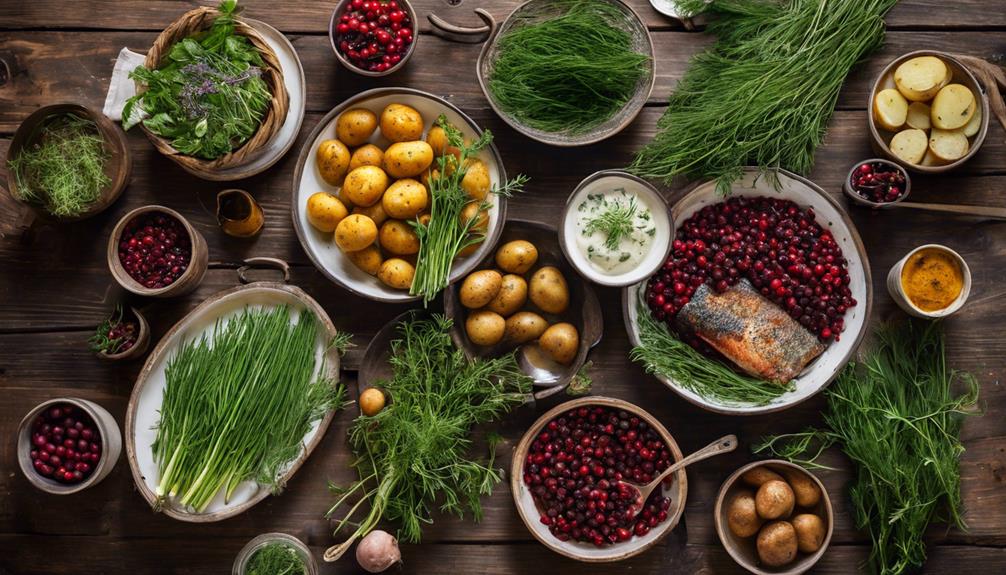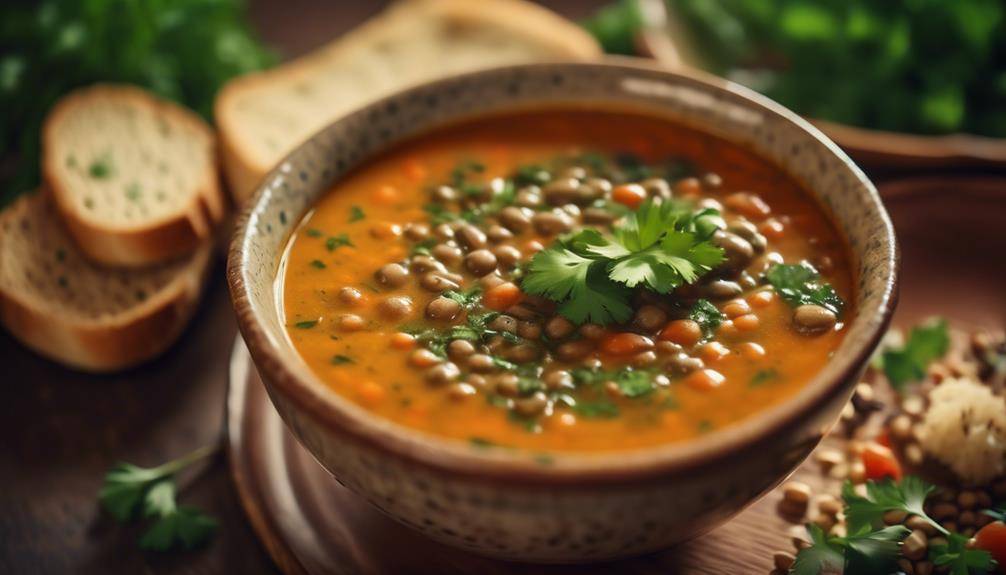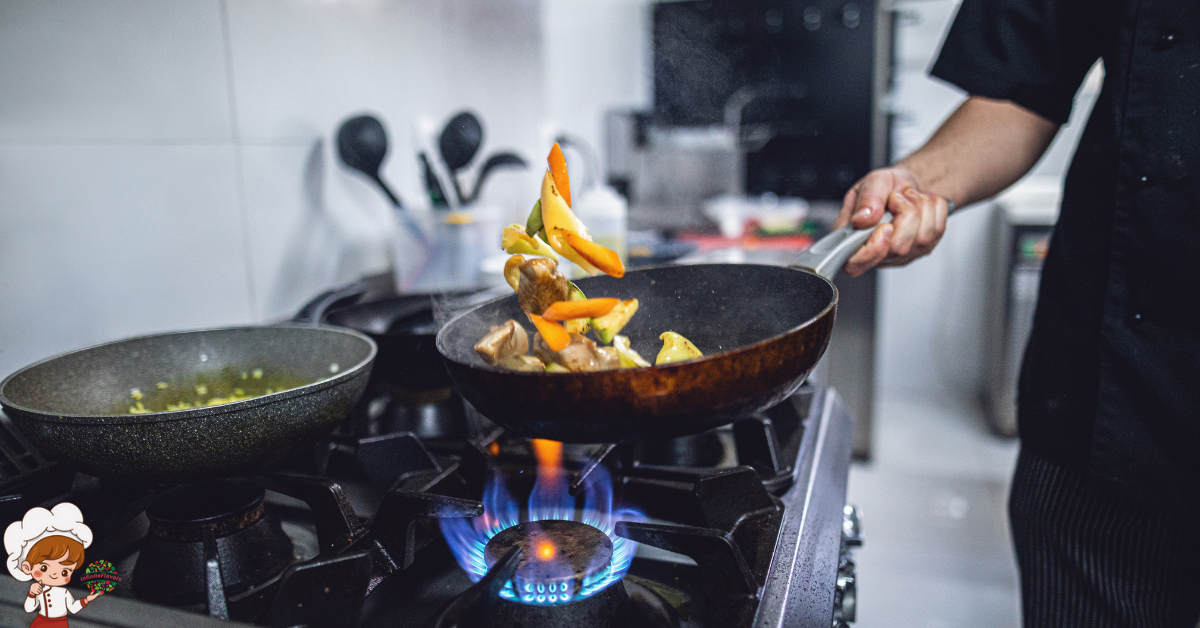Popular Herb And Spice Tips To Enhance Swedish Cuisine

Tips To Enhance Swedish Cuisine; To enhance your Swedish cuisine, start by embracing fresh herbs like dill, thyme, and sage for vibrant flavors. Experiment with spices such as allspice and cardamom to add warmth and complexity to your dishes. Incorporating ingredients like juniper berries and bay leaves enriches your meals while providing unique aromas. Don’t forget the brightness of lemon zest and the kick from chili to elevate your recipes further. These simple adjustments create delicious layers of flavor in your cooking. If you want to expand your culinary repertoire even more, there’s plenty more to explore.
Embrace Fresh Dill
Embracing fresh dill can elevate your Swedish dishes to new heights. This aromatic herb isn’t just a garnish; it’s a powerhouse of flavor that can transform your cooking. You’ll find that fresh dill pairs beautifully with traditional ingredients, enhancing everything from gravlax to creamy sauces. Its unique flavor combinations, such as dill with lemon or dill with mustard, can add a revitalizing twist to your meals.
To make the most of fresh dill, you should consider employing dill preservation techniques. If you’ve got an abundance, you can dry it, freeze it, or even make dill-infused oils. Drying dill is straightforward—simply hang it upside down in a cool, dark place until the leaves are crisp. Freezing is another great option; just chop the dill and mix it with a bit of water in ice cube trays, so you have ready-to-use portions whenever you need them.
When it comes to flavor combinations, don’t shy away from experimenting. Dill works wonderfully with fish, particularly salmon, but it can also enhance salads and soups. Try mixing it with yogurt for a delicious dip or dressing. Incorporating fresh dill into your meals doesn’t just add flavor; it also brings a vibrant, fresh element that can brighten up any dish. So, next time you’re cooking, reach for that bundle of fresh dill and let your taste buds experience the magic it brings to your Swedish cuisine.
Experiment With Allspice
Allspice offers a warm and complex flavor profile that can elevate your Swedish dishes. You can experiment with pairing it alongside traditional ingredients like meat and root vegetables. Try incorporating allspice into your recipes to discover new dimensions in your cooking.
Flavor Profile Exploration
When it comes to enhancing the flavors of Swedish cuisine, experimenting with allspice can open up a world of culinary possibilities. This unique spice brings together hints of cinnamon, nutmeg, and cloves, making it a versatile addition to many traditional dishes. Start by incorporating allspice into your herb combinations. It pairs beautifully with thyme and dill, adding depth and warmth to sauces or marinades.
Finding the right spice balance is key. Use allspice sparingly at first; its robust flavor can easily overpower more delicate herbs. Try adding a pinch to meat dishes like Swedish meatballs or even in baked goods to create a cozy aroma. You can also experiment by adding it to pickled vegetables, enhancing their flavors while maintaining a distinctly Swedish touch.
Don’t hesitate to get creative! Allspice can transform the ordinary into something extraordinary. Whether you’re making a hearty stew or a spiced dessert, this spice can elevate your dish. So, grab some allspice and start exploring its potential in your Swedish cooking; you might just discover a new favorite flavor combination.
Culinary Pairing Suggestions
As you explore the culinary potential of allspice, consider pairing it with ingredients that complement its warm, aromatic profile. This versatile spice works wonders in both sweet and savory dishes. For savory options, try combining allspice with meats like pork or chicken. Its depth enhances marinades and rubs, creating a delightful flavor balance.
When it comes to herb compatibility, allspice teams up beautifully with thyme, sage, and bay leaves. These herbs accentuate its complexity, making your dishes even more enticing.
On the sweet side, allspice shines in desserts. It pairs excellently with ingredients like apples, pears, and pumpkin. Think about incorporating it into pies or spiced cakes for that extra warmth.
Don’t shy away from experimenting with spice variations, too. A hint of cinnamon or nutmeg alongside allspice can elevate your dishes, adding layers of flavor.
In Swedish cuisine, you might find allspice in traditional meatballs or pickled herring. So, be adventurous! Try mixing allspice into your next dish and discover how it transforms your culinary creations.
Incorporate Juniper Berries
Juniper berries add a distinctive flavor to Swedish cuisine, enhancing dishes with their aromatic, pine-like notes. You can easily incorporate them into your cooking to elevate the taste of both meats and vegetables. Traditionally, juniper berries have been used in Swedish dishes like gravlax and game meats, imparting a unique depth of flavor that’s both earthy and invigorating.
To get the most out of juniper berries, start by experimenting with juniper infusion techniques. You can create a flavorful infusion by steeping crushed berries in spirits or oils. This method allows you to extract their essential oils and flavor, which can then be used in salad dressings, marinades, or sauces. Just remember, a little goes a long way, so start with a small amount and adjust according to your taste.
For meat dishes, especially game like venison or wild boar, consider rubbing crushed juniper berries onto the meat before cooking. This not only adds flavor but also helps to tenderize the meat. If you’re preparing a hearty stew, toss in a few whole berries during cooking to infuse the broth with their distinct flavor.
Don’t forget about pairing juniper berries with other traditional ingredients like dill or mustard. Together, they can create a harmonious balance in your dishes. By embracing juniper berries, you’ll not only honor traditional uses but also discover a versatile ingredient that enhances your culinary creations.
Utilize Cardamom Wisely
Cardamom can elevate your dishes to new heights, adding a warm, aromatic complexity that’s truly distinctive. This spice comes in several cardamom varieties, with green and black being the most common. Green cardamom offers a sweet, herbal flavor, perfect for both savory and sweet dishes, while black cardamom has a smokier taste, ideal for heartier meals.
To utilize cardamom wisely, start with whole pods. Crushing them just before use releases their essential oils, enhancing the flavor considerably. You can infuse cardamom into rice, stews, or even desserts like cinnamon rolls. Just be cautious with the quantity; a little goes a long way, and too much can overpower your dish.
Not only does cardamom bring incredible taste, but it also boasts numerous health benefits. It’s known for its digestive properties and can help reduce bloating and gas. Additionally, it has anti-inflammatory and antioxidant effects, making it a great addition to your diet. If you’re looking to spice up your culinary repertoire while also reaping health benefits, cardamom is your go-to option.
Consider pairing cardamom with other spices like cinnamon or ginger to create a warm, inviting flavor profile. Experimenting with cardamom in your cooking can open up a whole new world of flavors, making your Swedish cuisine even more delightful. So next time you’re in the kitchen, remember to reach for cardamom—it might just become your favorite ingredient!
Discover the Power of Thyme
When you embrace thyme in your cooking, you’re not just adding a herb; you’re infusing your dishes with a depth of flavor that’s both earthy and aromatic. Thyme has a unique ability to enhance a variety of dishes, making it a staple in your kitchen. Whether you’re preparing a classic Swedish meatball dish or a hearty vegetable stew, thyme works wonders.
One of the thyme benefits is its versatility. You can use fresh or dried thyme, and each form brings its own character to your meals. Fresh thyme offers a vibrant, lively flavor, while dried thyme provides a more concentrated essence. You’ll discover several thyme varieties, such as lemon thyme, which adds a citrusy twist, and creeping thyme, known for its ground-covering abilities and robust flavor. Experimenting with these varieties can elevate your culinary creations.
Thyme is also packed with health benefits. It’s rich in antioxidants and has antimicrobial properties, making it a great addition to your diet. Incorporating thyme into your dishes not only enhances flavor but also boosts nutritional value.
To get the most out of thyme, add it early in the cooking process for a more profound flavor infusion. For lighter dishes, sprinkle it just before serving to retain its fragrant notes. So, next time you’re in the kitchen, don’t underestimate the power of thyme; it’s a small herb that can make a big impact on your culinary adventures!
Add a Touch of Nutmeg
Nutmeg can transform your dishes in unexpected ways, adding a warm, nutty depth that enhances both sweet and savory recipes. This spice has a rich nutmeg history, dating back to ancient times, when it was highly prized in trade. In Swedish cuisine, it pairs beautifully with dishes like meatballs, creamy sauces, and even baked goods.
When using nutmeg, remember that a little goes a long way. Just a pinch can elevate your recipe, bringing out flavors you didn’t know were there. It’s especially effective in potato dishes and hearty stews, where it can harmonize with the other ingredients. If you want to experiment, try adding it to your favorite apple pie or custard for a delightful twist.
If you find yourself without nutmeg, don’t worry—there are nutmeg substitutes you can consider. Mace, which is the outer covering of the nutmeg seed, has a similar flavor profile and can be used in equal amounts. Alternatively, ground cinnamon or allspice can work in a pinch, though they’ll add their unique notes to the dish.
Enhance With Parsley
When you think about enhancing your Swedish dishes, don’t overlook parsley. It’s packed with nutritional benefits, adding both flavor and health perks to your meals. From garnishing soups to brightening up salads, parsley can truly elevate your culinary creations.
Nutritional Benefits of Parsley
Parsley is a powerhouse of nutrition that often gets overlooked in the kitchen. This vibrant herb packs a punch when it comes to health benefits. Packed with vitamins A, C, and K, parsley supports your immune system, promotes healthy skin, and aids in bone health. You might not realize that just a small handful of parsley can provide a significant boost to your daily nutrient intake.
One of the standout parsley benefits is its high antioxidant content. These antioxidants help combat oxidative stress in your body, potentially reducing the risk of chronic diseases. Additionally, parsley is rich in folate, which is essential for cell function and tissue growth, making it particularly beneficial for pregnant women.
Don’t forget about the fiber content! Including parsley in your meals can aid digestion and promote gut health. Its unique flavor enhances various dishes, allowing you to enjoy these nutritional benefits effortlessly. As you explore its culinary uses, consider adding fresh parsley to salads, soups, or as a garnish. You’ll not only elevate the taste of your meals but also take a step towards a healthier lifestyle. Enjoy the vibrant nutrition parsley brings to your table!
Culinary Uses in Dishes
Incorporating parsley into your dishes not only enhances flavor but also adds a nutritional boost. This versatile herb can elevate a wide range of traditional recipes, from hearty Swedish meatballs to fresh salads. When you sprinkle chopped parsley over your meals, you’re not just adding a pop of color; you’re also introducing a fresh, peppery taste that brightens every bite.
Consider using parsley in your sauce enhancements. Whether you’re whipping up a creamy dill sauce or a tangy mustard sauce, a handful of parsley can provide an extra layer of flavor that complements the other ingredients beautifully. You can also blend it into pesto or chimichurri for a vibrant twist that pairs perfectly with grilled meats or roasted vegetables.
Don’t forget about soups and stews! Adding parsley towards the end of cooking keeps its flavor intact, transforming your dish into something truly special. It’s also great as a garnish; just a few leaves can make your plate look restaurant-worthy. By incorporating parsley thoughtfully into your culinary creations, you’ll not only boost the flavor but also impress your guests with the delightful freshness it brings to every meal.
Use Bay Leaves in Cooking
How often do you consider the depth of flavor that bay leaves can bring to your dishes? These aromatic leaves are often overlooked, but they can greatly enhance your cooking. When you add bay leaves to soups, stews, or sauces, you’re not just adding an ingredient; you’re infusing your meal with a subtle, complex flavor that complements a variety of ingredients.
The bay leaf benefits extend beyond flavor enhancement. They’re known for their potential health benefits, such as aiding digestion and reducing inflammation. Incorporating bay leaves into your cooking techniques can elevate your meals while also promoting wellness. Just remember to remove the leaves before serving, as they’re not meant to be eaten.
To maximize their flavor, consider using whole dried bay leaves. Crush them slightly before adding them to your dish to release more of their essential oils. You can toss them in at the beginning of your cooking process to allow the flavors to meld, or add them halfway through for a more pronounced taste.
Experiment with different cooking methods, too. Whether you’re simmering a hearty broth or braising meats, bay leaves will contribute a warm, herbal note that’s hard to replicate. So next time you’re planning your meals, don’t forget to reach for bay leaves. They’ll transform ordinary dishes into something extraordinary, making them a staple in your spice rack.
Spice It up With Chili
Heat is an essential element in elevating your dishes, and chili peppers are the perfect way to add that fiery kick. With a wide range of chili varieties at your disposal, you can explore various heat levels to suit your taste. From mild poblano to the fiery habanero, each pepper brings its unique flavor profile to the table, enhancing your overall dish.
When using chili, it’s vital to achieve a flavor balance. You don’t want the heat to overpower your dish; instead, it should complement other ingredients. Consider incorporating spicy sauces into your recipes, like a homemade chili oil or a zesty salsa, to provide depth and complexity. Experiment with different cooking techniques, too—roasting or sautéing chili can amplify its natural sweetness and smoky notes.
Pay attention to chili pairings, as some flavors work better together than others. For instance, pairing chili with chocolate can create a rich, decadent dish, while combining it with citrus can brighten the flavors. Regional differences also play a role; for instance, Swedish cuisine can benefit from the incorporation of Asian-inspired chili dishes, adding an exciting twist to traditional flavors.
Infuse With Lemon Zest
Chili peppers bring heat to your dishes, but adding lemon zest can brighten flavors and enhance overall vitality. This simple yet powerful ingredient packs a punch when it comes to elevating Swedish cuisine. Lemon zest benefits include its ability to lift rich dishes, complementing ingredients like fish, potatoes, and even creamy sauces.
To incorporate lemon zest, start by using a microplane to finely grate the outer yellow rind of the lemon. Be careful not to include the bitter white pith underneath. You can add the zest directly to your dishes while cooking or sprinkle it on top just before serving for an extra burst of citrusy aroma. This is one of the most effective citrus infusion techniques.
Consider adding lemon zest to your marinades, dressings, or sauces. It works wonders with roasted vegetables or grilled meats, providing that invigorating note that balances out the flavors. If you’re making a potato salad or a creamy dip, a sprinkle of zest can make all the difference, turning a good dish into a great one.
Don’t stop at savory dishes; lemon zest can enhance desserts too! Use it in cakes, pastries, or even a simple fruit salad to add a twist.
Experiment With Sage
Experimenting with sage can transform your dishes, bringing a warm, earthy flavor that complements traditional Swedish ingredients beautifully. This herb, with its various sage varieties, offers a unique twist to your culinary traditions. Whether you’re using common garden sage or exploring the sweeter notes of pineapple sage, each type can elevate your cooking.
Start by incorporating sage into classic Swedish recipes like meatballs or gravlax. Just a few finely chopped leaves can enhance the flavor profile, adding depth to your dishes. You might also try making a sage-infused butter to drizzle over roasted root vegetables or fish, which are staples in Swedish cuisine. The richness of the butter combined with the aromatic qualities of sage creates an unforgettable taste experience.
Don’t hesitate to experiment with sage in soups and stews, too. Adding fresh leaves to a creamy potato soup or a hearty split pea soup can introduce a lovely contrast that brightens the overall flavor. You could even consider sage in your baking—imagine a savory sage scone served alongside your favorite cheese.
As you explore these sage varieties, pay attention to how the flavor changes with cooking methods. Sautéing sage releases its oils and intensifies its flavor, while adding it at the end of cooking preserves its fresh, aromatic qualities. By integrating sage into your dishes, you’ll not only honor traditional Swedish culinary practices but also create a delightful fusion that suits your palate.
Frequently Asked Questions: Tips To Enhance Swedish Cuisine
What Are the Health Benefits of Using Herbs and Spices in Cooking?
Using herbs and spices in cooking boosts flavor and offers health benefits. You’ll enjoy herb nutrition that supports digestion and immunity, while spice varieties can reduce inflammation and enhance overall wellness in your meals.
How Can I Store Fresh Herbs for Longer Freshness?
To store fresh herbs for longer freshness, use herb preservation techniques like wrapping in a damp paper towel and placing in a sealed container. Guarantee ideal storage conditions by keeping them in your fridge’s crisper drawer.
Can I Substitute Dried Herbs for Fresh in Recipes?
You can substitute dried herbs for fresh, but remember that dried herb conversions often require less quantity due to flavor intensity differences. Adjust accordingly, and you’ll still create a delicious dish with the right balance.
What Are the Best Cooking Methods for Maximizing Flavor From Herbs?
To maximize flavor from herbs, try various herb infusion techniques like steeping or blending. Use flavor extraction methods such as simmering in oil or broth, ensuring you capture the full essence and aroma of the herbs.
Are There Any Common Herb and Spice Pairings to Avoid?
When cooking, you should avoid herb compatibility issues like pairing basil with rosemary, as their flavors clash. Similarly, spice contrasts, such as mixing cinnamon with cumin, can create an unbalanced dish that’s not enjoyable.
Conclusion
By embracing these herbs and spices, you can elevate your Swedish dishes to new heights. Fresh dill adds that unmistakable flavor, while allspice and juniper berries introduce warmth and complexity. Don’t underestimate the power of cardamom, thyme, and bay leaves—they can transform your meals. Spice things up with a hint of chili and brighten your dishes with lemon zest. Finally, experimenting with sage can bring a delightful twist. Get creative and enjoy the delicious journey!








